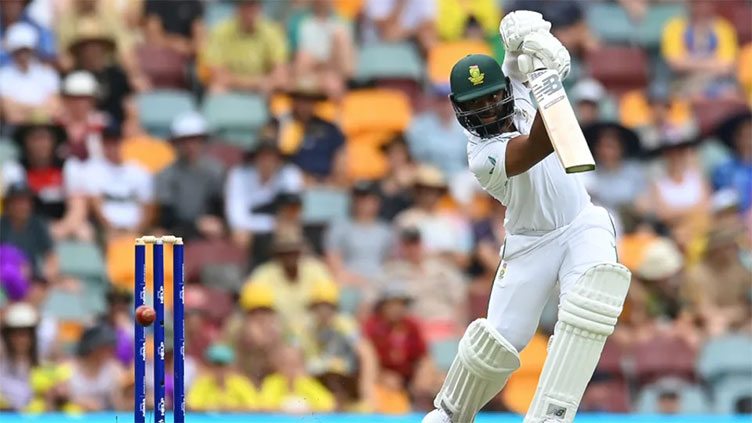South Africa look to fix technical difficulties

Cricket
South Africa seek to end a stretch of six successive sub-200 totals in Test cricket.
MELBOURNE (Web Desk) - Weight transfer into the ball and alignment at the crease are the two key technical areas South Africa s batters are focusing on as they seek to end a stretch of six successive sub-200 totals in Test cricket.
The squad traveled to Melbourne from Brisbane on Thursday. They trained together on what would have been the fifth day of the Gabba Test and have two more full net sessions scheduled before the Boxing Day match. As discussed in our examination of the batting here at least three of South Africa s top six - Sarel Erwee, Rassie van der Dussen and Kyle Verreynne - do not appear to be moving well in the middle.
Erwee has been caught behind the stumps nine times in his 15 innings, often while driving loosely. Verreynne has been dismissed eight times in his last 11 innings playing away from the body with minimal footwork. Van der Dussen, too, has not been getting forward properly, a mistake that has led to his wicket five times in his last nine innings. South Africa s batting coach Justin Sammons did not want to discuss them individually but gave ESPNcricinfo some broad-based observations of the things he has been working on.
"Generally speaking, when a batter gets out on the drive it can be due to his weight transfer and not being able to stay on top of the ball or control his contact point. It can also often be caused by an error in judgment: playing the drive to a ball that is not quite there in length or line especially when there is lateral movement on offer," he said.
Asked whether the issue is technical or mental, Sammons said both. "Footwork is obviously important, alignment and weight transfer are the key. The front shoulder dipping or rotating and head moving ideally leads the movement and moving forward allows you to create a stable base from which weight can be transferred. Weight transfer can either be aided or made more difficult by the batter s position at point of delivery or their mindset - whether they are decisive or not."
The one player in South Africa s line-up who has looked positive at the crease is vice-captain Temba Bavuma. Not only was he their top-scorer at the Gabba but he spent more than three-and-a-half hours batting across two innings, absorbing the pressure and even transferring a little back onto the bowlers.
"Temba has been playing really well over the last few years in the Test arena. He understands what approach and tempo is going to give him, and importantly the team, the best chance for success," Sammons said.
While Bavuma is known for starting his innings slowly - it took him nine balls to get a run in the first innings and 15 in the second - Sammons believes he has shown the kind of enterprise the rest can learn from as well as providing South Africa with someone to bat around. "His approach has been positive; he is looking to score and put the bowlers under pressure within his strengths. It showed, on a difficult pitch at the Gabba, where he displayed a sense of calm and awareness of scoring opportunities whether in attack or defence," Sammons said. "He was proactive in many subtle ways which I believe is important."
Bavuma s form is particularly good news for South Africa as it comes off the back of a torrid T20 World Cup, where he struggled for runs, and an elbow injury that kept him out of South Africa s tour to England in the winter. South Africa also have two reserve batters - Theunis de Bruyn and Heinrich Klaasen - in the squad and may consider adding one of them, at the expense of a quick for the second Test.


